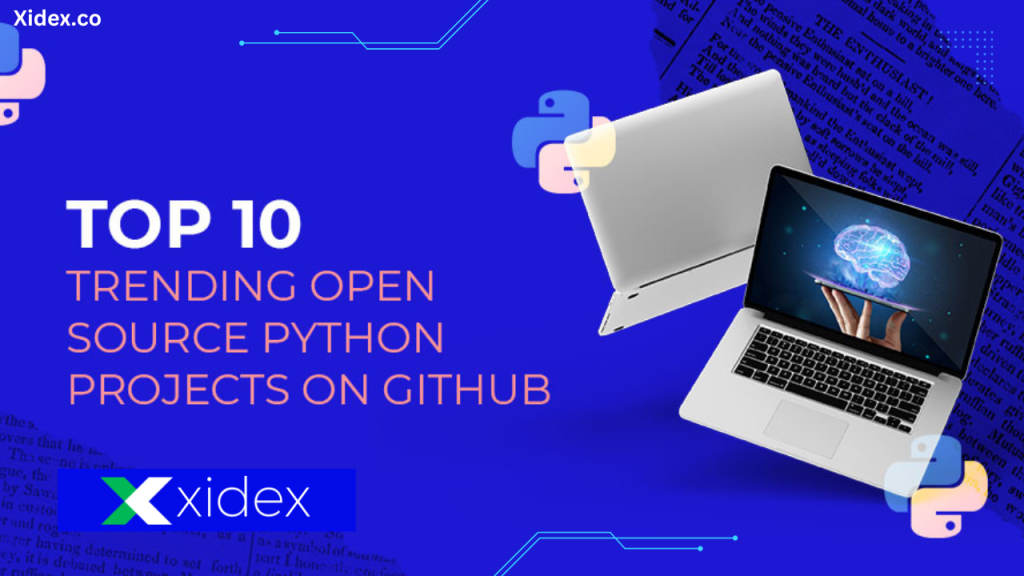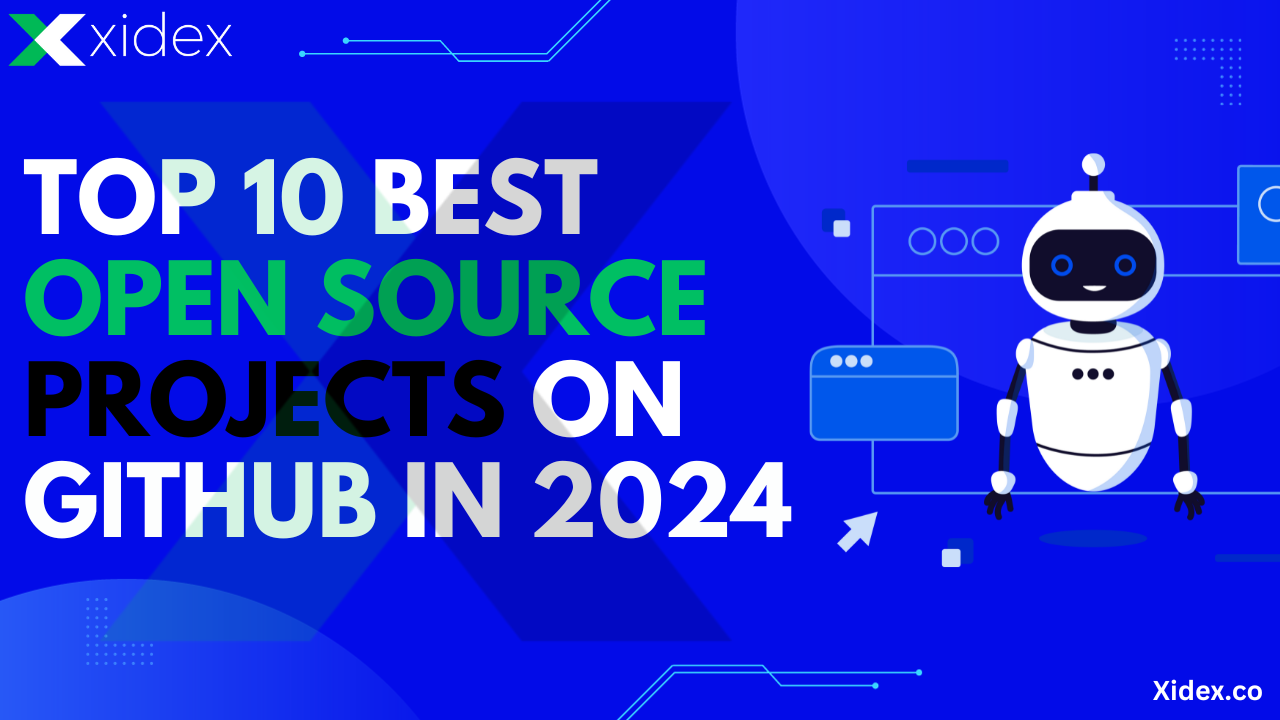Top 10 Best Open Source Projects on GitHub in 2024 In the dynamic realm of technology, the collaborative spirit of open source projects on GitHub has become a driving force behind innovation and progress. As we usher in 2023, the landscape is adorned with exceptional projects that are redefining the way we develop software. GitHub, serving as the nucleus of these initiatives, hosts a plethora of repositories where developers from around the world contribute to cutting-edge technologies. This blog post delves into the top 10 open source projects on GitHub, showcasing their significance, impact, and the role they play in shaping the future of software development.
TensorFlow 2.0: Revolutionizing Machine Learning(Top 10 Best Open Source Projects)
TensorFlow, the brainchild of Google, stands tall as a cornerstone in the world of machine learning frameworks. TensorFlow 2.0, the latest iteration, has refined the user experience, making it more accessible, performant, and flexible. Its popularity stems from its ability to empower developers and researchers to build and deploy machine learning models seamlessly.
- React.js: Building User Interfaces with Declarative Components: Developed and maintained by Facebook, React.js has become synonymous with the art of crafting interactive and efficient user interfaces. Its declarative approach to building components and efficient updates make it a top choice for front-end developers. React.js continues to evolve, ensuring that developers can create scalable and maintainable UIs with ease.
- Visual Studio Code: Your Versatile Code Editor: Microsoft’s Visual Studio Code has transcended the realm of a typical code editor, becoming a powerful and versatile tool for developers. Its key features include extensibility, integrated Git control, and support for a wide array of programming languages. The seamless integration of development tools and a user-friendly interface make it the preferred choice for many developers.
- Docker: Containerization for Seamless Deployment: Docker has revolutionized the deployment process with its containerization technology. By encapsulating applications and their dependencies into containers, Docker ensures consistency across different environments, making the deployment process smoother and more reliable. This approach has gained widespread adoption, particularly in the era of microservices and DevOps.
- Kubernetes: Orchestrating Containerized Applications: Kubernetes has emerged as the go-to platform for orchestrating containerized applications. With its robust features for deployment, scaling, and management of containerized workloads, Kubernetes simplifies the complexities of managing applications in a dynamic and scalable environment. Its prominence in the world of cloud-native development is undeniable.
- PyTorch: Empowering Deep Learning Enthusiasts: Developed by Facebook, PyTorch has established itself as a dynamic and user-friendly deep learning framework. Its flexibility and ease of use have made it a favorite among researchers and developers alike. PyTorch supports dynamic computational graphs, enabling a more intuitive approach to building and training neural networks.
- Node.js: Powering Scalable Server-Side Applications: Node.js has transformed the landscape of server-side development with its event-driven architecture. Its ability to handle concurrent connections efficiently makes it an ideal choice for building scalable and high-performance server-side applications. Node.js has a vast ecosystem of packages, contributing to its popularity among developers.
- Angular: Crafting Dynamic Web Applications: Maintained by Google, Angular is a comprehensive front-end framework designed for building dynamic web applications. Its two-way data binding and modular architecture simplify the development process, making it an excellent choice for large-scale projects. Angular continues to evolve, adapting to the changing needs of modern web development.
- Spring Boot: Streamlining Java Development: Spring Boot, an extension of the Spring framework, has streamlined Java development by providing production-ready defaults for application setup. This allows developers to focus on building features rather than spending time on intricate configurations. Spring Boot is widely adopted in enterprise-level applications, contributing to the robust Java ecosystem.
- Elasticsearch: Search and Analytics Engine: Elasticsearch has become synonymous with powerful search and analytics capabilities. Widely used for indexing and searching large datasets, Elasticsearch plays a pivotal role in applications such as log analytics, full-text search, and business intelligence. Its scalability and versatility make it a fundamental component in various data-centric projects.

The journey through the top 10 open source projects on GitHub in 2023 has unveiled a tapestry of innovation, collaboration, and technological advancement. From the realms of machine learning with TensorFlow to the efficiency of containerization with Docker and Kubernetes, each project contributes to the evolving landscape of software development.
As developers, researchers, and technology enthusiasts, it’s essential to embrace the collaborative spirit of open source. The projects highlighted here not only showcase the current state of the art but also serve as beacons guiding us towards the future of technology on Top 10 Best Open Source Projects. The GitHub ecosystem is dynamic, and new projects are continually emerging, promising even more exciting possibilities on the horizon.
In the spirit of open source, let’s continue to explore, contribute, and innovate, shaping a future where technology serves as a catalyst for positive change and advancement. As we bid adieu to this exploration of the Top 10 Best Open Source Projects, may your coding endeavors be fruitful, and may you find inspiration in the collaborative efforts that define the heart of open source development on Top 10 Best Open Source Projects. Happy coding!
1. TensorFlow 2.0:
Q1: What is TensorFlow 2.0?
A: TensorFlow 2.0 is an open-source machine learning framework developed by Google. It enhances the machine learning development experience with improved accessibility, performance, and flexibility for developers and researchers on Top 10 Best Open Source Projects.
Q2: How is TensorFlow 2.0 different from the previous version?
A: TensorFlow 2.0 introduces improvements in ease of use, eager execution by default, and tighter integration with Keras. It aims to simplify the process of building and training machine learning models on Top 10 Best Open Source Projects.
Q3: What types of applications can be developed using TensorFlow 2.0?
A: TensorFlow 2.0 is versatile and can be used for various applications, including image recognition, natural language processing, and predictive analytics. It is widely adopted in both research and industry on Top 10 Best Open Source Projects.
2. React.js:
Q1: What is React.js?
A: React.js, developed by Facebook, is a JavaScript library for building user interfaces. It follows a declarative approach to create interactive and efficient UI components for web applications on Top 10 Best Open Source Projects.
Q2: Why is React.js popular?
A: React.js is popular due to its efficient rendering, component reusability, and a virtual DOM that enhances performance. Its modular and declarative nature makes it a preferred choice for front-end development on Top 10 Best Open Source Projects.
Q3: Can React.js be used with other frameworks?
A: Yes, React.js can be integrated with other frameworks or libraries. It is commonly used in conjunction with state management libraries like Redux and is flexible enough to be part of larger application architectures.
3. Visual Studio Code:
Q1: What is Visual Studio Code?
A: Visual Studio Code is a free, open-source code editor developed by Microsoft. It supports various programming languages, offers integrated Git control, and is highly extensible through a wide range of plugins.
Q2: How does Visual Studio Code differ from other code editors?
A: Visual Studio Code stands out for its versatility, user-friendly interface, and extensive plugin ecosystem. It provides a seamless development experience with features like IntelliSense and debugging capabilities on Top 10 Best Open Source Projects.
Q3: Can Visual Studio Code be used for large-scale projects?
A: Yes, Visual Studio Code is suitable for projects of varying scales. Its performance, coupled with the ability to customize and extend its functionality through plugins, makes it a viable choice for both small and Top 10 Best Open Source Projects.
4. Docker:
Q1: What is Docker?
A: Docker is a platform for developing, shipping, and running applications in containers. Containers encapsulate applications and their dependencies, ensuring consistency across different environments and simplifying the deployment process on Top 10 Best Open Source Projects.
Q2: How does Docker benefit developers?
A: Docker streamlines the development process by providing a consistent environment for applications. It facilitates easier collaboration, scalability, and efficient resource utilization through containerization.
Q3: Can Docker be used in a non-containerized environment?
A: While Docker is primarily designed for containerization, its components, such as Docker Compose, can be adapted to non-containerized environments. However, its full benefits are realized in a containerized ecosystem on Top 10 Best Open Source Projects.
5. Kubernetes:
Q1: What is Kubernetes?
A: Kubernetes is an open-source container orchestration platform that automates the deployment, scaling, and management of containerized applications. It ensures the efficient operation of applications in dynamic and scalable environments on Top 10 Best Open Source Projects.
Q2: Why is Kubernetes important in the era of cloud-native development?
A: Kubernetes simplifies the management of containerized applications, making it easier to deploy and scale applications in cloud-native environments. It provides features for resilience, scalability, and automation.
Q3: Can Kubernetes manage non-containerized applications?
A: While Kubernetes is specifically designed for containerized applications, there are adaptations like “KubeVirt” that enable the management of virtual machines alongside containers.
6. PyTorch:
Q1: What is PyTorch?
A: PyTorch is an open-source deep learning framework developed by Facebook. It is known for its dynamic computational graph, flexibility, and ease of use in building and training neural networks.
Q2: How is PyTorch different from other deep learning frameworks?
A: PyTorch’s dynamic computational graph allows for more intuitive model building and debugging. It has gained popularity among researchers for its simplicity and support for dynamic neural network architectures on Top 10 Best Open Source Projects.
Q3: Can PyTorch be used for non-deep learning tasks?
A: Yes, PyTorch can be used for various machine learning tasks beyond deep learning, including traditional machine learning tasks such as regression and classification.
7. Node.js:
Q1: What is Node.js?
A: Node.js is a server-side JavaScript runtime environment that enables the execution of JavaScript code on the server. It is known for its event-driven architecture, making it suitable for building scalable and high-performance server-side applications on Top 10 Best Open Source Projects.
Q2: In what scenarios is Node.js commonly used?
A: Node.js is commonly used in scenarios requiring real-time applications, such as chat applications, streaming services, and applications with a high number of concurrent connections.
Q3: Can Node.js be used for building front-end applications?
A: While Node.js is primarily a server-side runtime, it can be used in front-end development for tools like task runners (e.g., Grunt, Gulp) and package managers (e.g., npm).
8. Angular:
Q1: What is Angular?
A: Angular is a front-end web application framework developed and maintained by Google. It simplifies the development of dynamic web applications with features like two-way data binding and a modular architecture on Top 10 Best Open Source Projects.
Q2: How does Angular facilitate large-scale web development?
A: Angular’s modular architecture and two-way data binding make it well-suited for large-scale projects. It provides a structured approach to development, enhancing maintainability and scalability.
Q3: Is Angular suitable for single-page applications (SPAs)?
A: Yes, Angular is commonly used for building single-page applications due to its ability to create dynamic and responsive user interfaces.
9. Spring Boot:
Q1: What is Spring Boot?
A: Spring Boot is an open-source Java-based framework that simplifies the development of production-ready applications. It provides defaults for application setup, allowing developers to focus on building features.
Q2: Why is Spring Boot widely adopted in enterprise-level applications?
A: Spring Boot’s convention-over-configuration approach and ease of integration with the Spring ecosystem make it a preferred choice for developing robust and scalable enterprise-level applications.
Q3: Can Spring Boot be used with other programming languages?
A: While Spring Boot itself is designed for Java applications, the Spring ecosystem provides support for other languages through projects like Spring Cloud and Spring Data.
10. Elasticsearch:
Q1: What is Elasticsearch?
A: Elasticsearch is an open-source search and analytics engine. It is widely used for indexing and searching large datasets, providing powerful capabilities for applications such as log analytics, full-text search, and business intelligence.
Q2: How does Elasticsearch handle scalability?
A: Elasticsearch is horizontally scalable, meaning you can add more nodes to the cluster to handle increased data and query loads. This makes it suitable for applications with varying scales.
Q3: Can Elasticsearch be used as a primary database?
A: While Elasticsearch is designed for search and analytics, it is not a traditional relational database. It is commonly used in conjunction with databases to enhance search and analysis capabilities.
Explore these FAQs to gain insights into the features, applications, and best practices associated with each of these top 10 open source projects on GitHub. Whether you’re a developer, researcher, or technology enthusiast, understanding the nuances of these projects can contribute significantly to your skills and knowledge in the ever-evolving world of technology. Happy exploring and coding!
Read More : The ChatGPT Hype Is Over — Now Watch How Google Will Kill ChatGPT.





